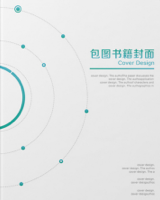The effects of active workstations on reducing work-specific sedentary time in office workers: a network meta-analysis of 23 randomized controlled trials
Zhou, L.
Deng, X.
Xu, M.
Show more
Wu, Y.
Shang, X.
E, F.
Wang, Y.
Liang, S.
Yang, K.
Li, X.
Close more
Li, Xiuxia;Yang, Kehu
BackgroundActive workstations have been proposed as a feasible approach for reducing occupational sedentary time. This study used a network meta-analysis (NMA) to assess and compare the overall efficacy of active workstation interventions according to type and concomitant strategy for reducing work-specific sitting time in office workers.MethodsPubMed, Web of Science, EMBASE, and Cochrane Central Register of Controlled Trials (CENTRAL) databases were searched from database inception until May 2022 to obtain randomized controlled trials (RCTs) assessing the efficacy of active workstations with or without concomitant strategies for reducing occupational sedentary time in office workers. The risk of bias of the RCTs included in this study was assessed according to the Cochrane Handbook. An NMA with STATA 15.1 was used to construct a network diagram, league figures, and the final surface under the cumulative ranking curve (SUCRA) values. The certainty of evidence was assessed using the grading of recommendations, assessment, development, and evaluation (GRADE) approach.ResultsA total of 23 eligible studies including eight different types of interventions with 1428 office workers were included. NMA results showed that compared to a typical desk, multicomponent intervention (standardized mean difference (SMD) = - 1.50; 95% confidence interval (CI) - 2.17, - 0.82; SUCRA = 72.4%), sit-stand workstation + promotion (Reminders of rest breaks, posture variation, or incidental office activity) (SMD = - 1.49; 95%CI - 2.42, - 0.55; SUCRA = 71.0%), treadmill workstation + promotion (SMD = - 1.29; 95%CI - 2.51, - 0.07; SUCRA = 61.6%), and sit-stand workstation (SMD = - 1.10, 95%CI - 1.64, - 0.56; SUCRA = 50.2%) were effective in reducing occupational sedentary time for office workers.ConclusionsMulticomponent intervention, sit-stand workstation + promotion, treadmill workstation + promotion, and sit-stand workstation appear to be effective in reducing work-specific sedentary time for office workers. Furthermore, multicomponent interventions and active workstations + promotion better reduced work-specific sedentary time than active workstation alone. However, the overall certainty of the evidence was low.


